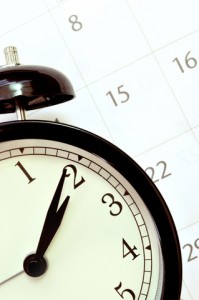Each week we’re going to try and moments in history, upcoming events, and different way you can engage in doing astronomy.
Looking back: Anniversaries
This week is NASA remembrance week. May no one ever forget the sacrifices of the crews of Apollo 1, Challenger, and Columbia.
- January 24, 1986
Voyager 2 flew past Uranus. The mission studied the 5 known moons and discovered 10 more, examined the Uranus Ring System, and took 1000s of images. [learn more] - January 24, 2004
Opportunity Rover landed on Mars. This day on Earth marked ‘Sol 1’ on what was intended to be a 90 day mission to explore Mars. 9 years later this little rover is still going strong! [learn more] - January 27, 1967
Apollo 1 Disaster. The crew of Apollo 1 were lost to fire during a failed launch pad test on Launch Pad 34 at Cape Canaveral. The sacrifice of this crew – Command Pilot Virgil “Gus” Grissom, Senior Pilot Edward H. White and Pilot Roger B. Chaffee – led to a massive changes in crew capsule design, including a move away from pure Oxygen atmospheres, that have made space travel safer for future generations of astronauts. [learn more] - January 27, 1967
Challenger Disaster. The space shuttle Challenger blew up 73 seconds after launch due to the failure of a too-cold o-ring. All crew perished: Michael J. Smith, Dick Scobee, Ronald McNair, Ellison Onizuka, Christa McAuliffe, Gregory Jarvis, Judith Resnik. As a result of this preventable accident new checks and balances have been added to all launch procedures. [learn more] - February 1, 1958
Explorer 1 launched. America’s first satellite was tiny and powerful. Launching on a Juno 1 rocket, this mission discovered the Earth’s van Allen radiation belts and documented a micrometeor impact rate of 6-7 per hour. [learn more] - February 1, 2003
Columbia Disaster. During re-entry the Columbia dis-integrated over Texas and Louisiana. The cause of the accident was attributed to damage sustained by the Columbia’s left wing during it’s take-off when a suitcase sized chunk of foam broke of the External Tank and hit the wing. All shuttle missions after this accident included time dedicated to examining the shuttle for damage, and a backup shuttle was always prepared for a rescue mission. [learn more] - February 3, 1966
Luna 9 Lands & takes Photos of Lunar Surface. This was the first mission to successfully land on the moon and send back images. While the images were not immediately released by the Soviet Union, the transmitted data was intercepted by the Jodrell Bank’s radio telescope and the data was in a standard format used to transmit newspaper photos. This allowed BBC equipment to be used to decode and release the images to the world. [learn more]
Upcoming Events for January 28-Febraury 3, 2012
- Astronomy Cast with Fraser Cain and Dr. Pamela L. Gay
Time: Monday Jan 30, 12pm LA / 3pm NEW YORK/ 8pm LONDON / 5am + 1d SYDNEY
Location: Google Hangouts on Air at CosmoQuest
Take a facts-based journey through the cosmos with Fraser Cain and Dr. Pamela Gay. They’ll help you learn not only what we know but how we know it about the universe we live in. - Weekly Space Hangout hosted by Fraser Cain.
Time: 10am PACIFIC / 1pm EASTERN / 6pm GMT Thr Jan 19 or 5am Fri Jan 20 SYDNEY
Location: Google Hangouts on Air at CosmoQuest
Join Fraser Cain along with some combination Alan Boyle, Pamela Gay, Nicole Gugliucci, Emily Lakdawalla, Phil Plait, and Miles O’Brien for a round of this weeks Space News.
- Public (Second Life) Lecture: Science in Cyberspace by George Djorgovski (aka Curious George)
Time: Jan 30, 10am LA / 1pm NEW YORK / 6pm LONDON / 5am + 1d SYDNEY
Location: Large Auditorium on StellaNova, Second Life
All modern human endeavors, science and scholarship included, are increasingly migrating to cyberspace. We interact with our data, instruments, theoretical models, literature, and colleagues through the cyberspace, now typically through the Web, but immersive VR is likely to play an increasingly important role. As the science in the 21st century becomes ever more computational and data-intensive, the scientific method evolves, and we have to expand our set of tools and skills in order to be able to effectively discover new knowledge in the exponentially growing data flood. These trends are a part of a broader picture, where science and technology co-evolve, along with our society and culture. (see all MICA events here)
Ongoing Online Projects
- Globe at Night: Go outside and document how light pollution does (or doesn’t) impact how you see the stars (link)
- Vote for the International Observe the Moon Night 2012 Dates: Help us celebrate the moon on a night of your choosing. This year the public is invited to help pick the night for InOMN (#moonnight) and to suggest themes for the celebration. (link)
Save the Date!
- Palo Alto Meetup: Come talk astronomy and space science at the SETI Institute with team scientists and educators including Dr. Pamela L. Gay. RSVP on our Meetup Group





 Join the Crew!
Join the Crew!
 Escape Velocity Space News
Escape Velocity Space News
0 Comments